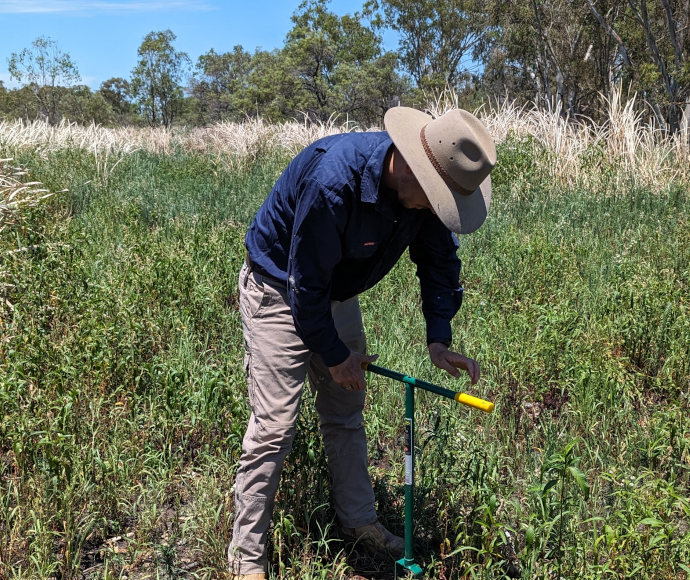What soil samples unearthed in the Gwydir Wetlands
Results of soil sampling in the Gwydir Wetlands could prove a valuable tool in the future management of water for the environment.
In 2010, at the end of the Millennium Drought, but before rain and river flows had returned to the Gwydir catchment, the NSW Water for the Environment program collected soil samples across the Gwydir Wetlands.
NSW Senior Wetlands and Rivers Conservation Officer Daryl Albertson said he was interested in determining the total carbon and bioavailable carbon in wetland soils at the end of the drought, which lasted from 2001 to 2010.
‘Carbon is the building block of life,’ Mr Albertson said.
‘Bioavailable carbon is the carbon that can be taken up by microorganisms and move through the food chain.
‘It is a natural element that makes up most of the solid tissue of almost all living things.’
Mr Albertson said wetlands play an essential role in the carbon cycle, in carbon uptake and storage in vegetation and soil, and the microbial decomposition of organic matter.
‘Wetland soils are known for their high carbon content, higher than dry land soils. When combined with an adequate water regime, this carbon content supports wetland vegetation response and productivity,’ Mr Albertson said.
The Millennium Drought was broken by extensive flooding in 2011–12, followed by extended dry periods, moderate seasons and then, from 2020, successive years of wetland flooding.
A decade after the initial tests, soil carbon samples were collected for comparison.
‘The 2023 soil sampling results showed a marked increase in total soil carbon and bioavailable carbon at all but one sampling site.’
In 2010, total carbon ranged from 0.5% to 2.4% and bioavailable carbon from 0.4% to 2.7%.
In 2023, total carbon ranged from 2.4% to 6.0% and bioavailable carbon from 2.1% to 4.1%.
‘The strategic wetting and drying cycle has grown and dried vegetation across the wetlands system.
‘As a result, the carbon has built up in the soil,’ Mr Albertson said.
Mr Albertson said that a better understanding of carbon cycling and storage within the semi-arid wetland soils could prove valuable in filling gaps in current knowledge and inform future water management.
‘The goal of the water for the environment program is to build resilience across the Gwydir Wetlands system,’ Mr Albertson said.
‘A resilient wetland will weather the long dries and respond strongly when flows return ensuring a more sustainable wetland system in the future.
‘Soil monitoring, including trends in soil carbon, may prove appropriate indicators for system restoration and resilience.
‘The ability to determine quantifiable benefits of wetland soil carbon storage may assist other wetland practitioners seeking similar beneficial long-term wetland outcomes.’
